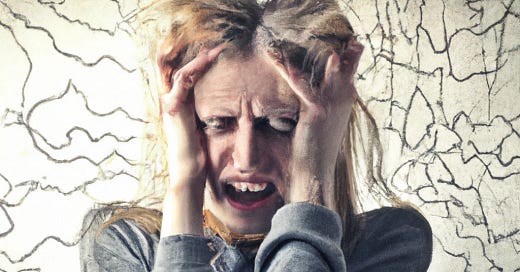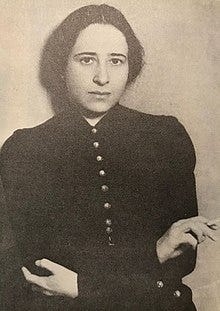The Age of Anxiety and the medicalisation of loneliness
When the poet W.H. Auden published The Age of Anxiety in 1947 he could not have predicted the subsequent explosion of conditions that today come under the heading of anxiety. Seventy-five years on, we find that the term anxiety has become attached to virtually any of the many troubles of life. The recent Lockdown has given rise to terms like lockdown baby separation anxiety, lockdown puppy separation anxiety or lockdown easing anxiety. The British National Health Service offers advice on ‘How to cope with anxiety about getting “back to normal”’.
The very idea that getting back to normal after the lockdown should be a source of anxiety indicates that in the current era not being anxious is likely to be perceived as abnormal
What would have shocked Auden was not merely the proliferation of anxiety-talk but also the trivialisation of this condition. The poem, The Age of Anxiety highlights the human condition of isolation. For Auden, this condition was amplified by the absence of a moral consensus about the conduct of human affairs, a consensus essential for binding people together. Auden attributed this condition of estrangement to the absence of tradition and of religious belief is modern society.
Auden’s long poem about human isolation was published five years after the artist Edward Hopper produced Nighthawks, his famous painting, depicting a midnight scene of a diner, inside which 4 anonymous figures can be seen: a bartender, a woman and 2 men. Hopper later stated that ‘unconsciously, probably, I was painting the loneliness of a large city’. Hopper’s visual representation of a morally fragmented world communicated through The Age of Anxiety captured a sensibility where loneliness and isolation were rarely interpreted through the medium of psychology.
In the decades to follow but as especially in the 21st century anxiety has turned into the go-to psychological term used to describe people’s insecure and emotionally disoriented response to their insecure existence. As anxiety became increasingly medicalised it acquired a more ominous, disease like quality that needs to be treated with of antidepressant drugs. Since it also became a condition through which the historical condition of alienation is interpreted, the number of people reporting that they are anxious is continually on the rise.
The usage of antidepressant drugs increased by nearly two and a half times from 2000 to 2020 in 18 European countries, according to Organization for Economic Cooperation and Development (OECD) data. And the prevalence of anxiety in early 2020 was double or more than double that observed in previous years in Belgium, France, Italy, Mexico, New Zealand, the UK and the US.. In March 2022, `World Health Organisation reported that during the first year of the COVID-19 pandemic, global prevalence of anxiety and depression increased by a massive 25%.
It is our contention that through its medicalisation, anxiety becomes detached from the conditions that gave rise to it. As Auden suggested, The Age of Anxiety expresses a mood of disorientation regarding moral norms and community values. Its prevalence is today presented and a fetishised as a mental health crisis. However, what it really is, is a crisis of meaning. It is our contention that the failure to ,understand The Age of Anxiety has led to the inflation of threat perception, which in turn fuels the expansion of the culture of fear.
The medicalisation of human existence
If anxiety has been turned into a mental health problem, it is not surprising that western society has also medicalised loneliness. From the standpoint of today’s psychologically obsessed western culture the four lonely and isolated characters portrayed in Hopper’s Nighthawks are likely to be diagnosed as potential mental health patients.
Hopper’s Nighthawks
Yet, loneliness, the sense of isolation, accompanied by the feeling of alienation has been a permanent feature of the human condition. References to the unhappy state of loneliness are scattered in the Bible. As the 17th century poet, John Milton reminded us ‘loneliness is the first thing which God’s eye named not good’. However, it was only in the early modern era that people started talking about loneliness as a stand-alone problem. Until the 19th century loneliness tended to be associated with the physical state of being apart from society or company. During the 19th century, loneliness became associated with people’s inner state and philosophers like Kierkegaard were pre-occupied with the fear of loneliness.1
Until the 21st century, loneliness was principally a problem addressed by theologians, philosophers, sociologists, poets and artists. In recent times it has become an issue for health professionals. Unfortunately, once a dimension of the human condition becomes framed in the language of medicine it is only a matter of time before it acquired the status of an epidemic. That is why, for example, health professionals in the US, have sounded the alarm about what they characterise as ‘the loneliness epidemic]!
Loneliness is also a fashionable problem in Europe. Back in 2018, the UK Government appointed Tracey Crouch into the newly established post of ‘Minister for Loneliness’. The appointment came in the wake of a series of alarming reports about the prevalence of loneliness among the elderly.
No doubt there are millions of us who feel lonely. It is impossible to determine with any degree of accuracy whether people are lonelier than in previous times. We certainly talk a lot more about it. But the feeling and the emotions associated with loneliness cannot be reduced to measurable quantities. So, when campaigners assert that loneliness is a ‘comparable risk factor for early death as smoking 15 cigarettes a day, and is worse for us than well-known risk factors such as obesity and physical inactivity’, they speak as propagandists rather than as scientists. Campaigners who warn that ‘loneliness increases the likelihood of mortality by 26 %’ turn an intangible feature of our inner life into calculable quantities.
The medicalisation of loneliness mystifies a condition for which there is no cure. Loneliness often expresses the difficulty that we have in understanding our place in the world. When people struggle to come to terms with their self and find it difficult to gain affirmation loneliness can assume the form of an existential crisis. The philosopher Hannah Arendt described loneliness as ‘that nightmare which, we all know, can very well overcome us in the midst of a crowd’ when we feel ‘deserted by oneself’.
Arendt in 1933
Arendt believed that the destructive effects of loneliness could be contained through the habit of conversing with oneself. She called this ‘silent dialogue of myself with myself’, solitude. For Arendt solitude had a positive connotation. She wrote that ‘though alone, I am together with somebody (myself) that is’.
Arendt’s attempt to convert loneliness through an inner dialogue into solitude offers one way of coming to terms with our estrangement from ourselves, Others, like the writer Maya Angelou, found refuge in music. ‘I could crawl into the space between the notes and curl my back to loneliness’, she wrote. Still others like the existentialist feminist writer, Simone de Beauvoir embraced loneliness and sought to harness its creative force. What they all understood was that we can exist with loneliness through finding value in our solitude. Meaning rather than a cure helps us deal with the problems of existence.
solitude
But in contemporary Europe meaning is in short supply. European societies have become estranged from their past to the point that they are constantly engaged in a quest for values that can make people feel good about themselves. However, values cannot be conjured up out of thin air. Which is why we need to de-medicalise the problems associated with the human conditions and begin to draw on the historical traditions and cultural resources that underpin European civilisation.
If you leave your past behind, you will lose your way and it is unlikely that antidepressant drugs will provide you with direction to where you belong.
See the discussion on Kierkegaard in Rav Soloveitchik’s ‘The Lonely Man of Faith’







